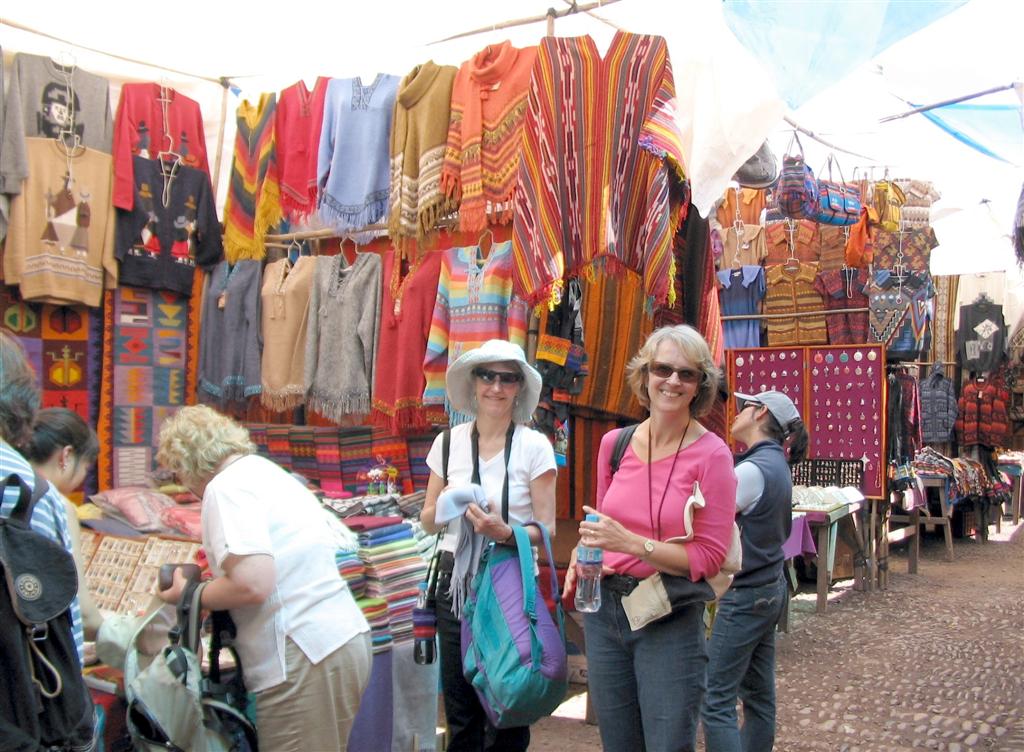Sacred Valley

The Sacred Valley follows the Urumbamba river north west from the Inca capital, Cusco. There are numerous Inca remains set in stunning scenery along the valley.

The valley floor is fully cultivated, but a lot of the early terracing has been left untended. There are attempts to bring back some of the early crop cycles to make full use of these terraces again.
Pisac
One of the more spectacular Inca sites is in Pisac. Like many others it is set high up in the Andes and though extensive, is difficult to see from below in the valley.


The Pisac ruins are set across the whole of the mountain top. It was quite a scramble going from one area to the other. We would have loved to spend more time here, but the next destination beckoned.

Pisac hosts not just the ruins, but also one of the largest craft markets in the country.
Sightseeing or shopping – always a problem deciding!

Ollantaytambo
Ollantaytambo is another large Incan site of mixed purpose – part religious, part military and part agricultural. Over time it has become difficult to understand the purpose of all the various remaining structures. However it is a large site, situated at the junction of a couple of valleys with breathtaking views over these different parts of the Sacred Valley area. The rest of the Andes chain serve as a fantastic backdrop to Ollantaytambo. When we were at the top, while our guide was explaining the history of the site, several of us noticed a bullfight being staged down below in the valley. Peruvian bullfights are much more humane than Spanish ones. Because bulls are so important for agriculture, the bullfights are contests of strength with bulls locking horns and pushing each other, with a lot of loud snorting going on. As soon as one bull starts giving ground, then he loses. But no bulls are actually killed or seriously hurt in the process.



The structures built into the adjoining mountains are large grain stores (enlargement below), stocked up in good years & used when the harvest was poor. The El Nino effect, every 7 years or so used to have a devastating effect on the Indians, well before the effects of modern Global Warming.

